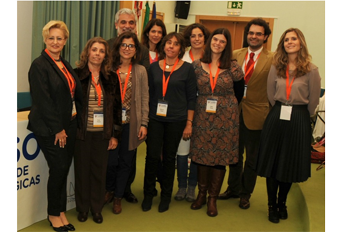Associação Portuguesa de Investigação em Cancro
Carcinoma da tiróide secundário a radioterapia: A importância de protocolos de seguimento em jovens sobreviventes oncológicos
Carcinoma da tiróide secundário a radioterapia: A importância de protocolos de seguimento em jovens sobreviventes oncológicos

Já se encontra bem estabelecida a relação de causalidade entre radioterapia externa e desenvolvimento de carcinoma da tiróide. Contudo, existem poucos estudos que apresentem a real evolução das alterações do parênquima tiroideu ao longo do tempo. Os autores relatam 10 casos de crianças sobreviventes oncológicas, cuja tiróide foi envolvida, direta ou indiretamente, no campo de irradiação. Foram seguidas desde o término da terapêutica oncológica, tendo em conta o seu risco aumentado de desenvolvimento de nódulos e, subsequentemente, carcinoma da tiróide. Não existem ainda protocolos uniformizados para esta monitorização, apresentando os autores uma proposta de seguimento a longo-prazo destes doentes, considerando esse risco incrementado.
Autores e Afiliações:
Joana Simões-Pereira, Margarida Silva Vieira, M. Conceição Pereira
Serviço de Endocrinologia do Instituto Português de Oncologia de Lisboa, Francisco Gentil.
Abstract:
Background: Radiotherapy increases the risk of thyroid cancer (TC); patients submitted to this treatment should undergo a long-term follow-up. Our aim is to describe the features and outcomes of young patients who developed TC after radiotherapy.
Methods: At our center, patients undergoing radiotherapy directly or indirectly involving the thyroid are regularly followed up in order to detect early dysfunction or nodules. Herein, we report the cases of 10 patients who were submitted to radiotherapy and developed TC.
Clinical Findings: Seven patients were irradiated in the neck and 3 in nearby regions. The mean age at the last radiotherapy session was 10 ± 5.5 years. The average time until the appearance of the first thyroid nodule was 14 ± 4.7 years. The mean size increment of the nodules was 2.4 ± 1.6 mm/year. On the first cytology, only 2 results were suspicious of papillary thyroid cancer (PTC). All patients presented histology of PTC. Eight were in stage I and 2 in stage II. The median follow-up from primary diagnosis to TC and beyond was 20 and 3 years, respectively.
Conclusions: In these patients, cytologies may be difficult to interpret due to persistent benign results. The threshold for surgical indication may be anticipated, considering the increased risk of TC. We report the evolution of these nodules over time, from the end of primary oncological treatment.
Revista: Case Reports in Oncology




